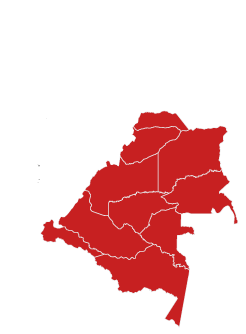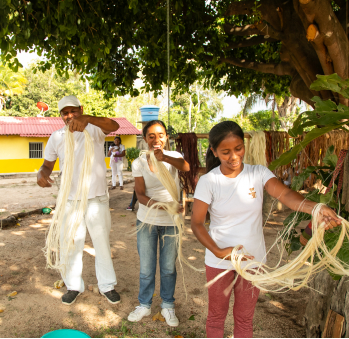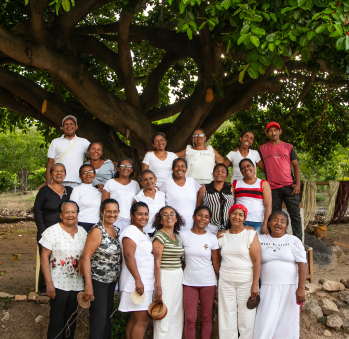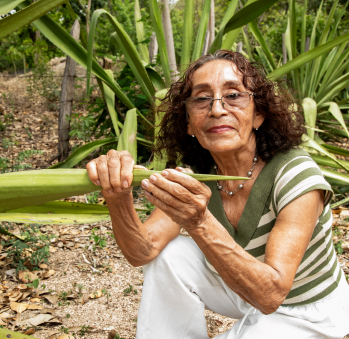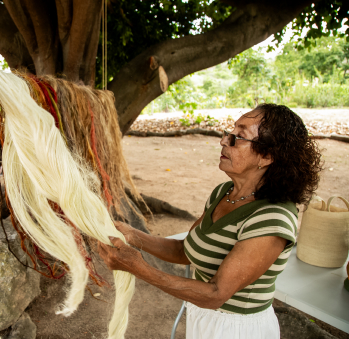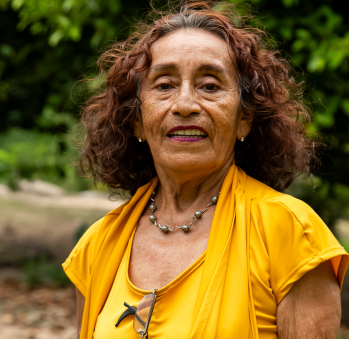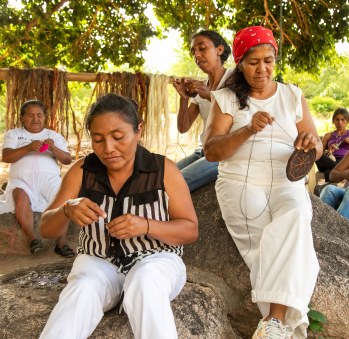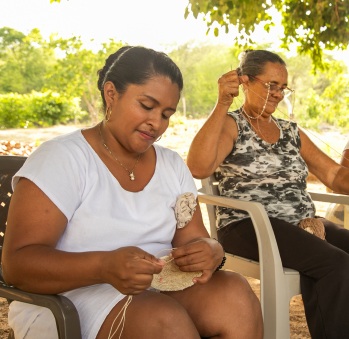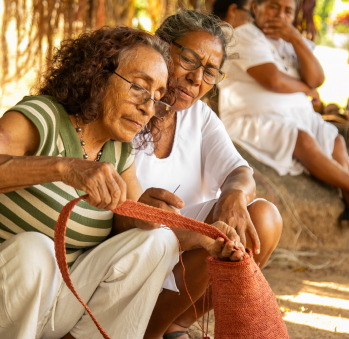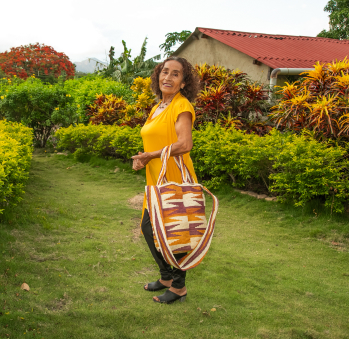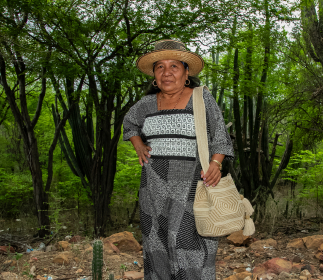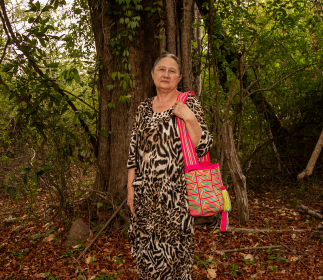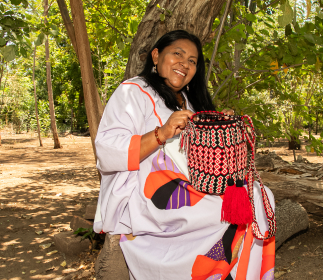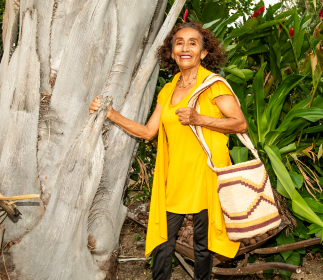Mabel Esther Vega
Taller: Asoplacer -Herenciarte
Oficio: Tejeduría
Ruta: Ruta Riohacha - San Juan del Cesar
Ubicación: San Juan del Cesar, La Guajira
Mabel Esther porta su etnia wiwa como un tesoro. Incluso, si en algún momento de su vida, algunos de su pueblo la rechazaron porque se fue a estudiar docencia y se profesionalizó, intentándole robar su identidad. Pero no lo lograron, por supuesto, porque eso se lleva en la sangre y ella sabe muy bien quiénes son sus ancestros. De hecho, como justicia poética, para afincarla aún más en su territorio, la terminaron nombrando como la maestra unitaria, es decir, profesora de todos los niveles de los niños de su comunidad, convirtiéndola por 43 años en una autoridad plena para transmitir lo que significa ser indígena y convivir en un mundo occidentalizado.
Como buena maestra habla de la tradición del fique en su pueblo con holgura y abundancia. Cuenta que para el wiwa la mochila en fique es esencial, pues allí carga el hayo, o esa mezcla de hoja de coca con sales calizas o ceniza que luego mascará para afinar el pensamiento. Los indígenas trituran las hojas dentro de la mochila con una piedra, lo que la va tostando. Por ello, los niños wiwa –entre los cuales ella habla en primera persona– nacieron entre pencas de maguey y, para poderse ir a la escuela, las mamás les decían a sus hijos que debían dejar listas dos libras de fique para tejer. Para ella, aunque a veces le pegaba el hambre pues solo podía desayunar hasta cumplir con la tarea, ésta no era ninguna pesadilla. Ella amó el fique desde que lo vio por primera vez, a diferencia de su hermana Consuelo que prefería pilar el maíz y cambiarle la tarea a Mabel, la menor.
Pero “sacar el fique”, era algo que tuvo que hacer sin guianza, recuerda ella, entendiendo lo difícil que fue. Por eso desarrolló un don, el de la observación: se quedaba mirando calladita a sus padres, y trataba de replicar lo visto, agarrando la carrumba, o el huso, como veía que lo hacían ellos, empatando los hilos de fique para hacer la cabuya, al igual que luego, más grandecita, fue viendo cómo se paleteaba e intentó replicar el chinchorro que hacía su papá, desbaratándolo a escondidas en el cuarto trasero de la casa. Lo mismo hizo con su mamá, la veía tejer la gasa, agarrando el hilo con el dedo gordo del pie y moviéndolo con maestría, y así la copiaba. Fue un universo de oficio que, entendido con los ojos resulta un reto de marca mayor. De ahí, también, la maestría de esta artesana que, a punta de ensayo y error, logró dominar una tejeduría propia de su región.
Mabel cuenta que, aunque la tejeduría es su vida, lo que más disfruta hacer del oficio es tinturar la fibra. Y hacerlo con plantas, raíces, tallos y flores. Cuando habla de esto se le iluminan los ojos y nos dice que su jardín es su pequeño paraíso, de allí usa la raíz de remolacha y las flores de la trinitaria, que es una enredadera que va podando en una matera, también usa las semillas del algarrobo para sacar un marrón que llama “espectacular”, y le entrega un capítulo al morito, ese árbol que ofrece unos colores amarillos y verdes según su tratamiento. Mabel está convencida de que la semilla que le regaló ese árbol se la llevó un murciélago. Seguramente porque estaba embelesado con las 12 variedades de mango que tiene en su patio y porque todo en él es frondosidad. Así que sí, concedámosle al vampirito el privilegio del transporte del color que le hace la vida feliz a la artesana. Porque sí que lo es, y la transmite esa alegría, esa que celebra que, apenas empezando los setentas, se siente tan enterita como para seguir muchos años más tejiendo la vida.
Artesanías
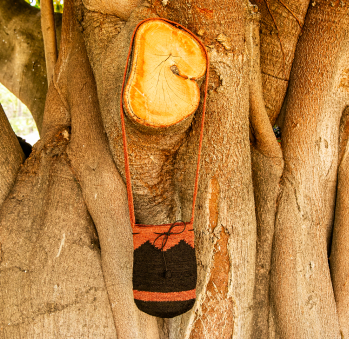
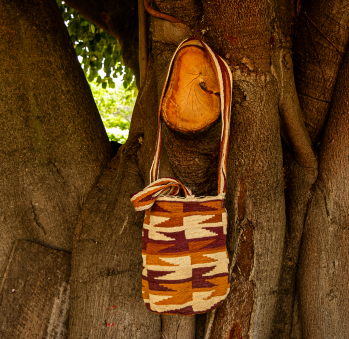
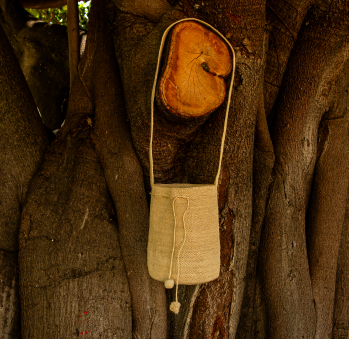
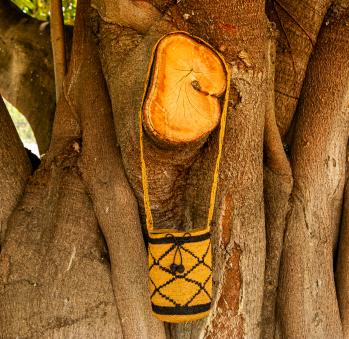
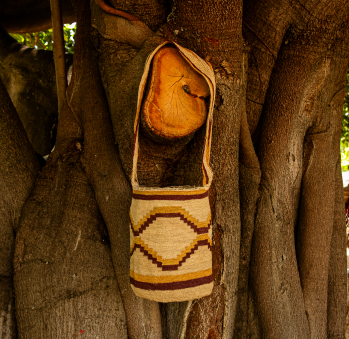
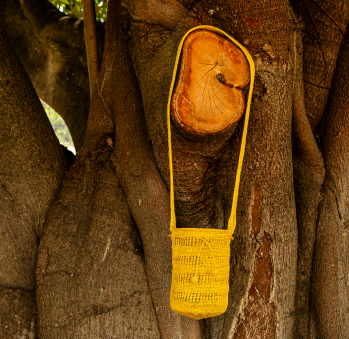






Artesanos de la ruta
Artesanos de la ruta
No puede copiar contenido de esta página

